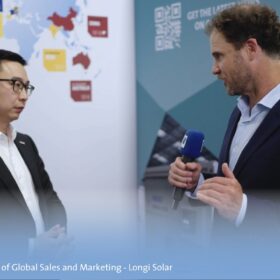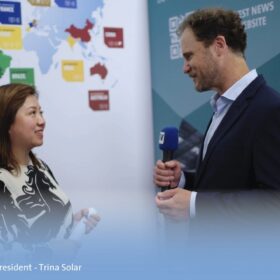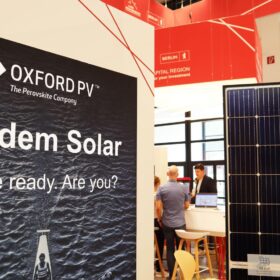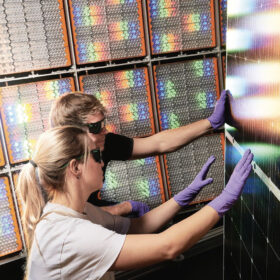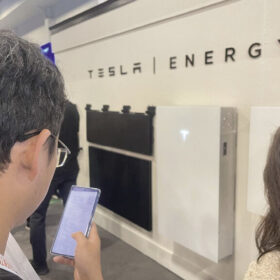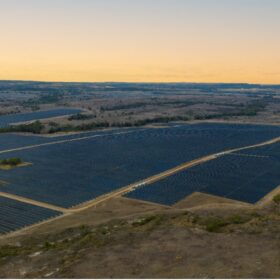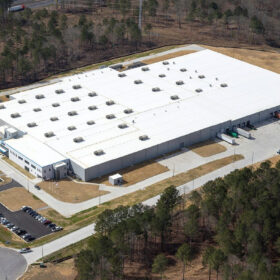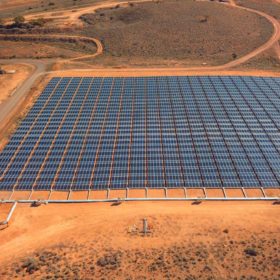‘We expect to ship 40 GW of back contact products in 2025’
As part of our Intersolar 2024 interview series, pv magazine spoke with Dennis She, Senior VP of Global Sales and Marketing at Longi Solar, about the company’s transition to the back contact (BC) technology, the expected shipment volumes for 2024, and the strategy to address overcapacity and pricing issues. He also spoke about Longi’s plans in the hydrogen sector and said the company does not intend to enter the energy storage business.
Trina expects consolidation, diversification of technology in challenging market conditions
At Intersolar Europe 2024, pv magazine spoke with Helena Li, executive president at Trina Solar, about fierce competition and consolidation in the PV industry. She believes the strongest manufacturers will become stronger in the months to come and says only product diversification and innovation can help companies move ahead in the current overcapacity scenario.
‘They are all selling below their cost prices’
In the second interview in a series held at Intersolar 2024, pv magazine spoke with Karen Tang, editorial director for Europe at US-based global energy price reporting agency OPIS, about the strong pressure on prices across all segments, including the downstream business. She defined the current market situation as “unhealthy” and “bleak” for the PV industry, although she acknowledged that overcapacity is also making solar extremely competitive compared to all other energy sources. Tang also expects pressure on electricity and gas prices to continue this year.
‘In the next year, some of these guys are going to be bankrupt’
At Intersolar in Munich, pv magazine spoke with Jenny Chase, solar analyst at BloombergNEF, about the incredibly low polysilicon prices, massive overcapacity, and increasing consolidation. According to Chase, this year there will be enough polysilicon capacity to produce 1.1 TW of solar modules, but global module demand is expected to reach around 585 GW. “That is a pretty huge delta,” she said, noting that the solar industry should also prepare for a series of “negative feedback mechanisms,” such as negative prices and excess of solar power.
Oxford PV unveils 26.9% perovskite tandem module efficiency record
Oxford PV has announced a record-setting 26.9% efficiency for its perovskite tandem module at Intersolar Europe 2024, the continent’s largest solar and energy storage event.
Shedding light on tandem perovskite solar cell progress
Perovskite PV devices are set to become the next big thing in solar with market analysts at S&P Global Commodity Insights predicting 1 GW of production by the end of 2024, rising to 6 GW in 2025. Perovskite tandem devices are at the front of the queue for commercialization but their characterization presents technical challenges.
Tesla’s new power play
The first installations featuring the Tesla Powerwall 3 are currently being completed in the United States, with the company promoting a fully integrated solar-plus-storage and electric vehicle (EV) residential system, with big backup power capacity. While the first Powerwall created a new market segment, the latest iteration enters a marketplace in oversupply.
PPA upside for large-scale solar grows in Australia
Bilateral power offtake agreements between corporate and industrial companies and solar projects are creating significant and growing demand for utility-scale PV in Australia. The development is one of a number of bright spots in a challenging market segment.
Weekend Read: Thin prospects
The production of PV ingots and wafers remains the most highly concentrated of all the production stages in the silicon solar supply chain. Yet efforts to re-establish production in Europe and the United States are not for the faint-hearted.
Big batteries to create tailwinds for large-scale solar in Australia
The accelerating deployment of large-scale energy storage is one factor behind the tailwinds forming for large-scale solar in Australia. Rystad Energy Senior Analyst David Dixon said that with gigawatts of big batteries under construction, the flexible load will create demand for solar during peak PV production periods.

